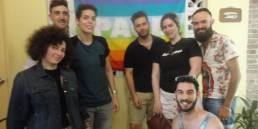We spent an afternoon taking photos in the new Little Havana, a neighborhood that has welcomed Miami’s working class and immigrants for 80 years now, from white to black to Cuban to Honduran.
Photos are set to Richard Blanco’s poem ‘La Revolución at Antonio’s Mercado’
Para la santera, Esperanza, who makes me open new boxes of candles so she can pick out the red ones, the color of Changó, her protector spirit, and tutors me in the ways of all the spirits: Eleguá, Ochún, Yemayá
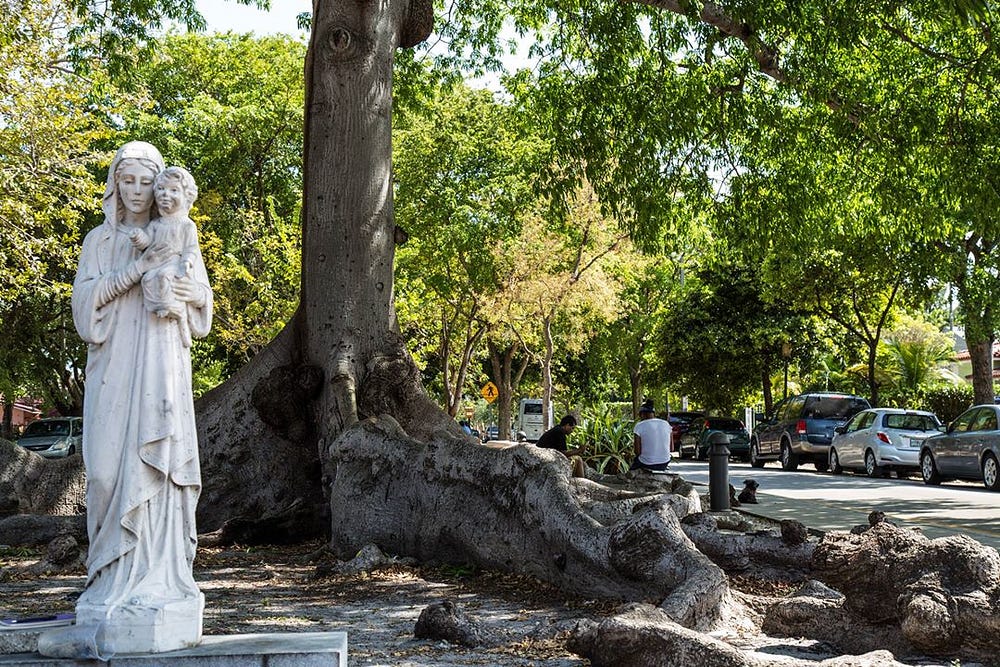
Ceiba tree, a sacred tree in the Santeria religion, at the Cuban Memorial Plaza (13th and Calle Ocho)
Para Josie on welfare, who sells me her food stamps for cash because she can’t buy cocoa butter soaps, Coca-Cola, or disposable diapers with them,
Para la Señora Vidal and her husband who came early in the 50s beforela Revolución, own the famous Matador Grille on Eighth Street, helped those who came later, who give me two-dollar tips when I double bag,
Para Elena who makes me sort through cartfuls of avocados to find thebest one, her nostalgia-coated tongue complains that the fruit here can’t compare to the fruit back home — where the sugar was sweeter, the salt saltier,
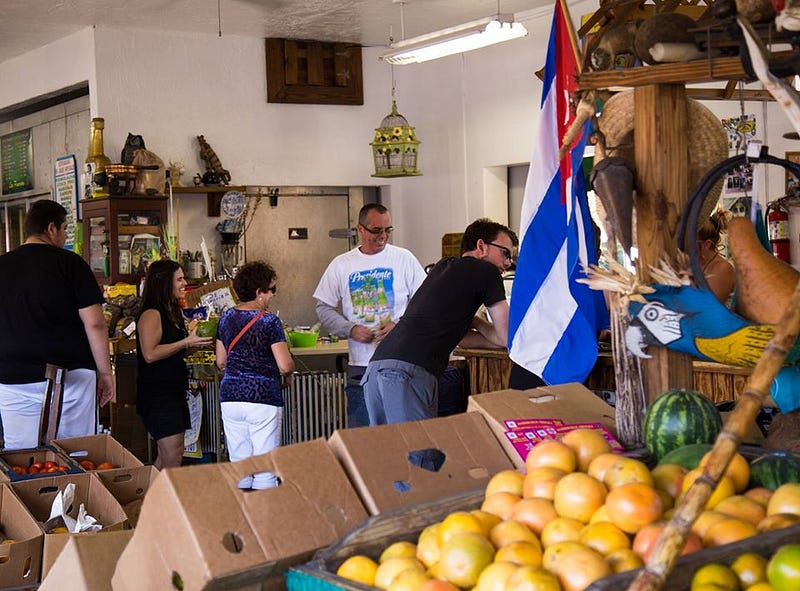
Angel Hernadez of Pinar del Rio opens fresh coconuts at Los Pinarenos Fruteria (13th and Calle Ocho)
Para Juan Galdo who remains unsatisfied with the flavor of los tabacos de Honduras,
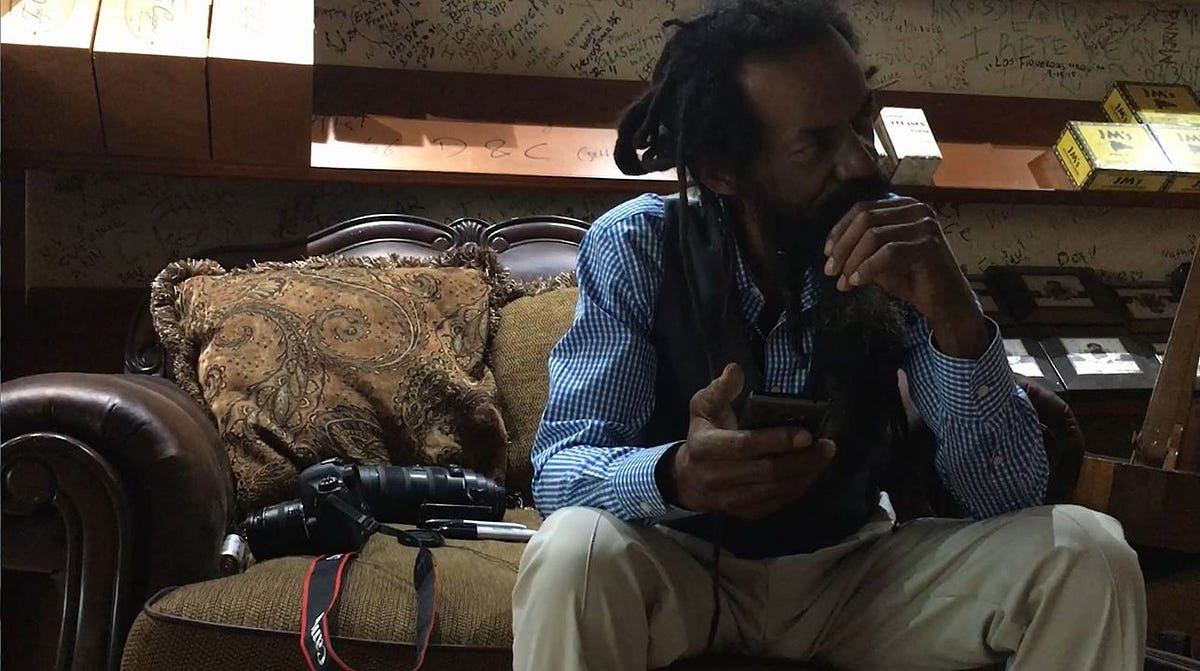
JP Amador of Santiago, who takes thousands of pictures every week at Top Cigar — with los tabacos de Dominicana (15th and Calle Ocho)
Para Mrs. Benitez the only regular who buys broccoli, who takes English night class and asks me to check her homework,
Para Pepe who asks me to translate his insurance statements, immigration papers, and junk mail offers for “free” vacations in Mexico,
Para the cashier, Consuelo, who wants me to teach her daughter, María, English and love, and wants me to escort María to her Quinces debutante,
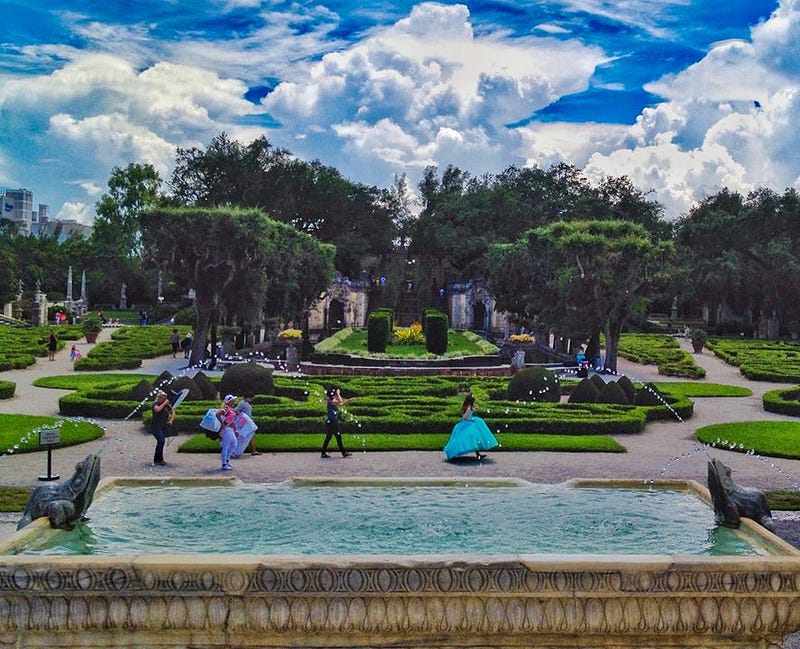
Photographers follow Cuban princesses at the Miami palace Vizcaya (35th and South Miami Ave)
Para Migdalia Sanchez who forgets some labels are now bilingual and comes to me confused when she mistakenly tries to read the English side of the can,
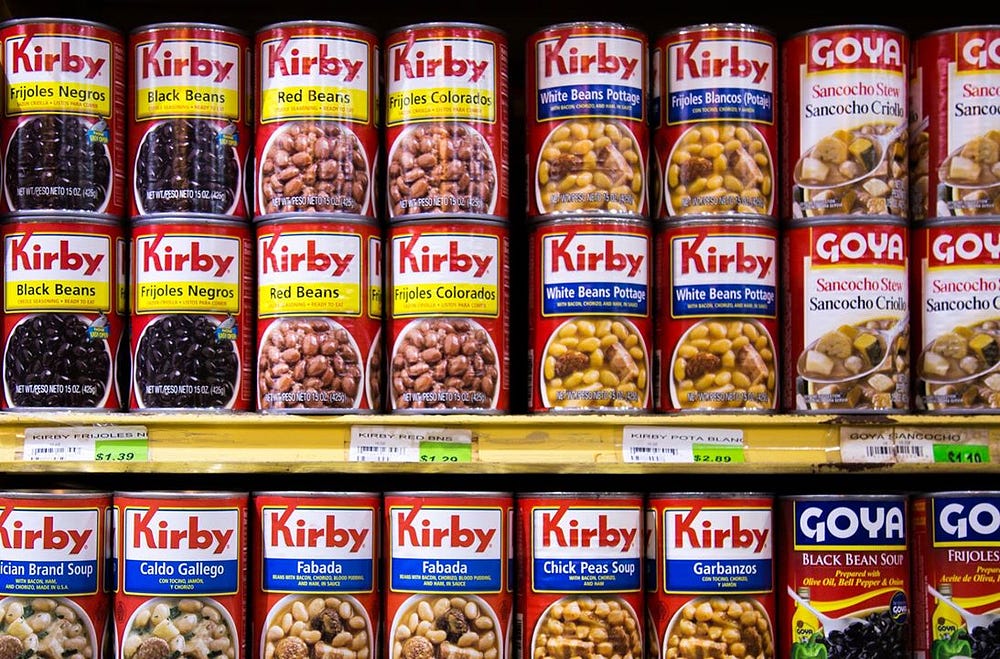
Frijoles / Beans at El Nuevo Siglo, an Argentinian grocery store with a Cuban lunch counter (13th and Calle Ocho)
Para la vieja Gomez who I help sort through dimes, quarters, and nickels — American change she has never learned to count,
Para los americanos who are scared of us, especially when we talk real loud and all at the same time, who come in only for change or to call a tow truck,
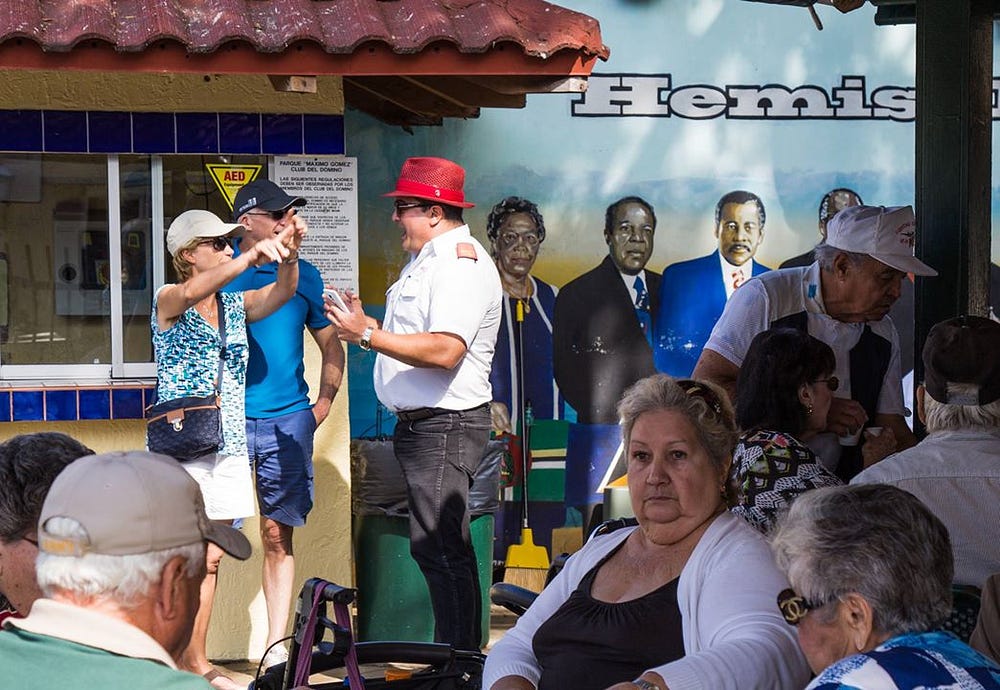
Domino players and fanny packed tourists co-exist at Maximo Gomez park (15th and Calle Ocho)
Para los haitianos who like us because at least we are Caribbean neighbors,
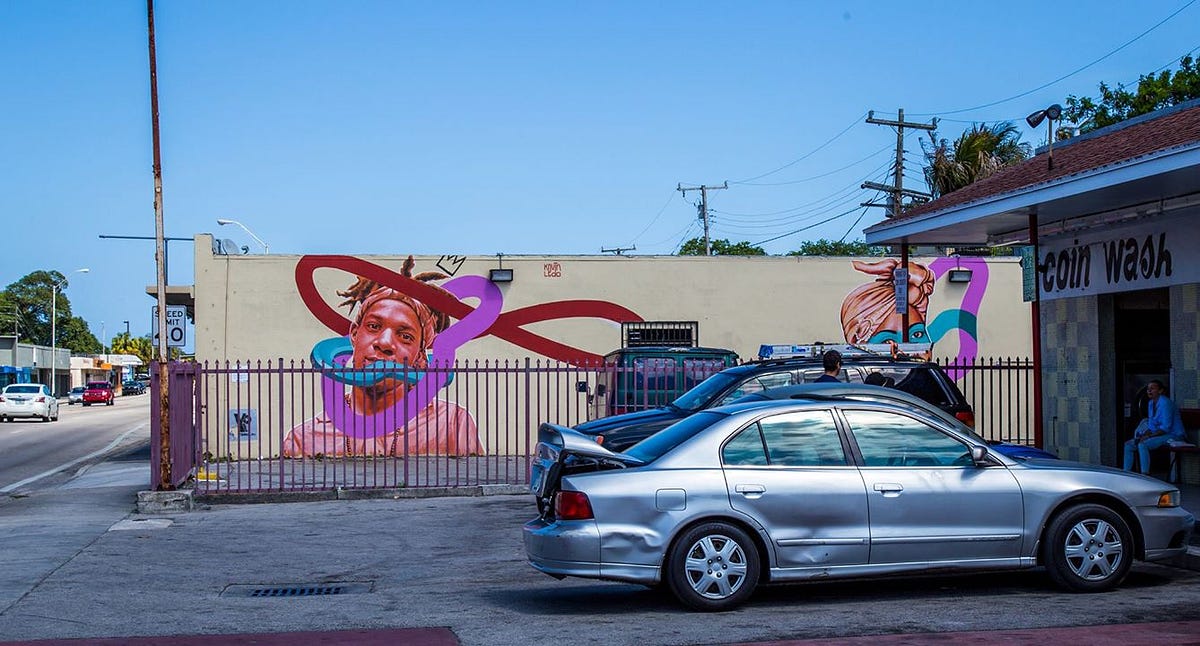
Mural of Jean-Baptiste Riche in Little Haiti — a neighborhood whose gentrification is much discussed — outside of Little Haiti (Miami and 54th)
Para Pablito who likes his boiled ham sliced paper-thin like the after-school snacks his mother prepared for him before she was accused and sentenced,
Para Juanita who had to leave Enrique, her only son, in ’61, who carries in her sequined coin purse a scratchy photo of herself at fifteen to remind herself she is still alive, and shows it to me so I can acknowledge her lost beauty,
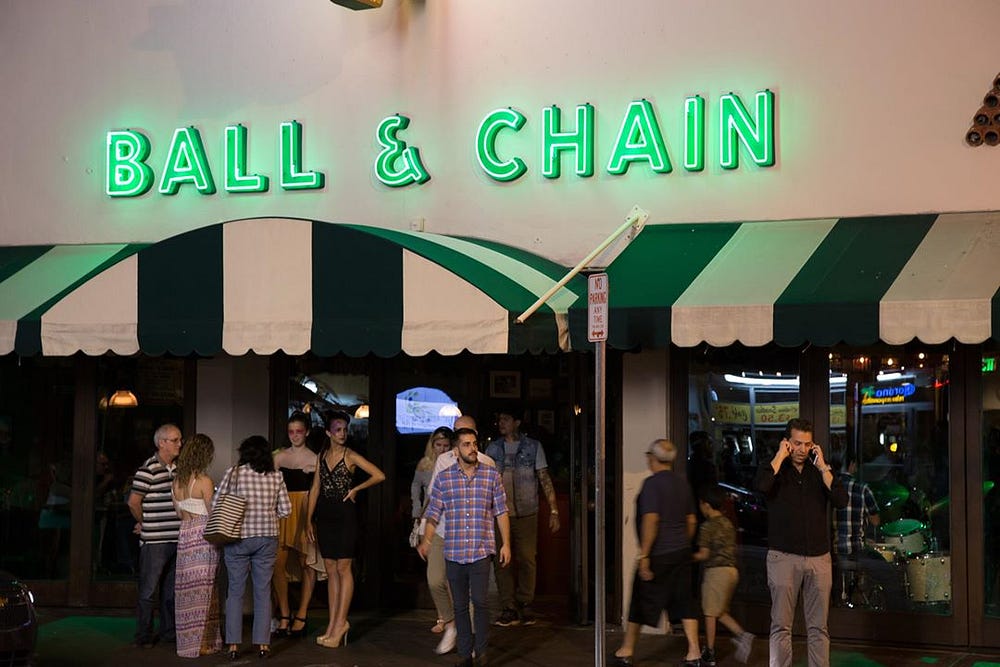
Dancers outside of Ball & Chain, the new (old) hot spot in Little Havana (15th and Calle Ocho)
Para Carlos who comes in mid-mornings, leans against the cafeteria counter drunk with delusion, takes a swig of espresso like a shot of whiskey and tells me la Revolución will die before the end of the year, who hopes to host Noche Buena at his house near Havana, next year,
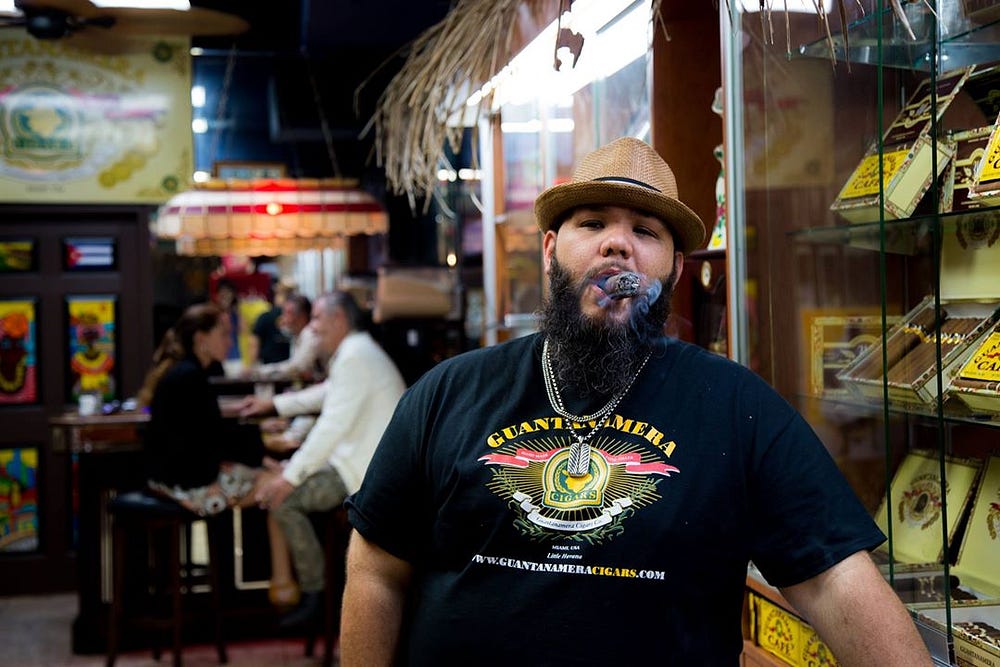
Erik Otero at Guantamera Cigars, who will make you a café, offer you a whiskey, and tell you about his decade long litigation with Cuba (14th and Calle Ocho)
Para la Revolución, todos sus grandes triunfos, toda su gloria,
Para Vicente my best friend, who sneaked beers with me behind the green Dumpster, who taught me how to say really gross things in Spanish, who couldn’t get his family out, who had only me in the States, who put a bullet through his neck on the day of his anniversary, who left a note addressed to me in Spanish — “Para mi amigo.”
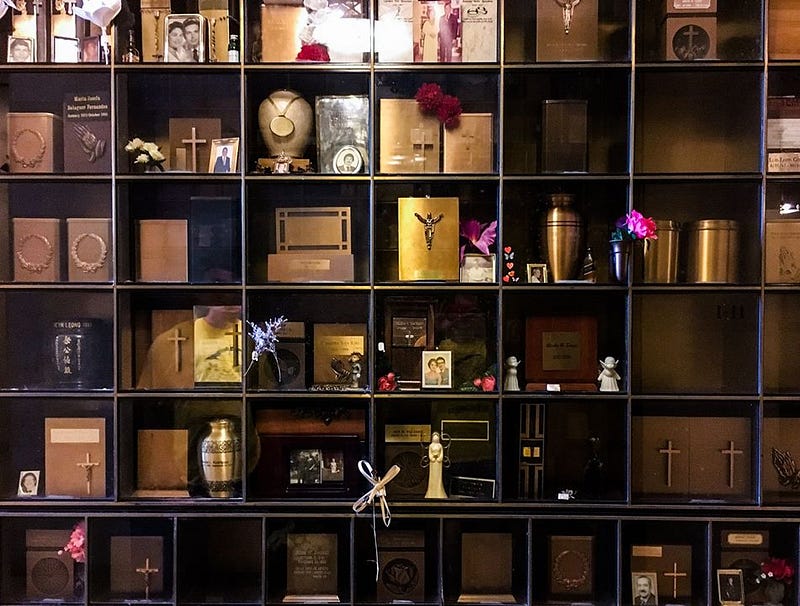
Columbarium at Woodlawn cemetery (32nd and 8th street)
Daniel Jimenez
Daniel is the founder and CEO of CubaOne. His father came to the U.S. from Cuba through the Pedro Pan program, two months before the Cuban Missile crisis. Daniel grew up in Miami before pursuing a Ph.D. in neuroscience and beginning his career at the management consultancy McKinsey & Company. He's now a program leader for EY's global knowledge transformation and digital transformation, and founded CubaOne Foundation after a cousin asked, “is there a ‘Birthright’ for Cuba?”

